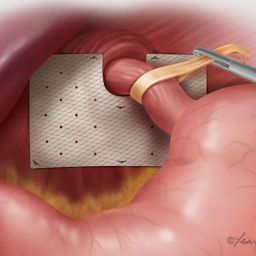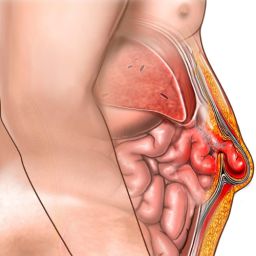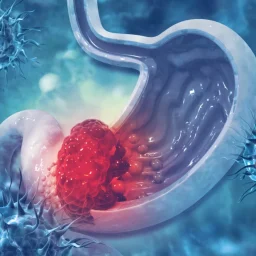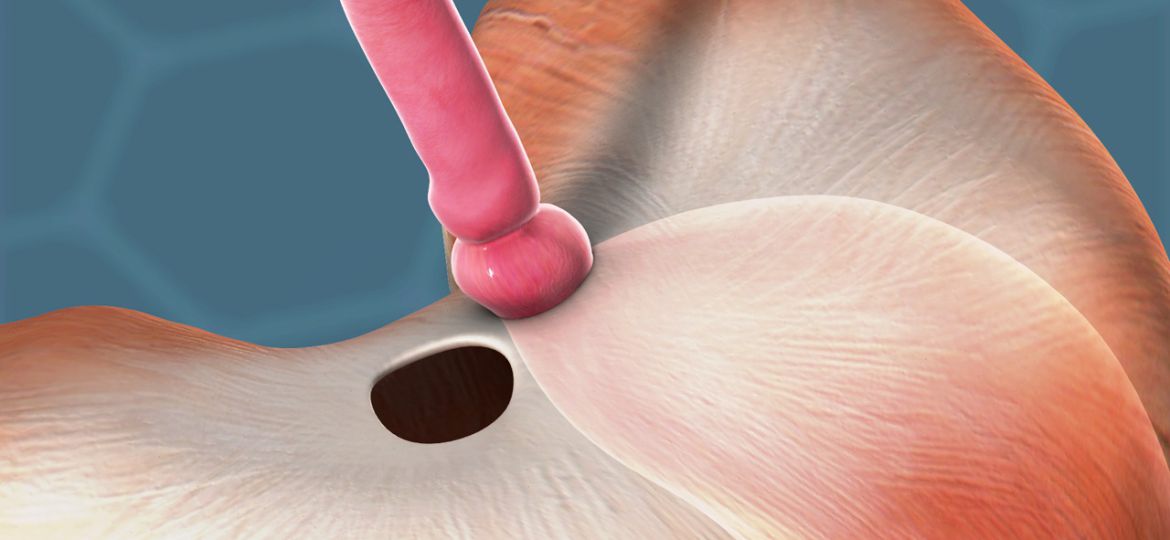
1. Understanding the Types of Hiatal Hernias
Before exploring the risk factors, it is important to understand the two main types of hiatal hernias, as each type may affect different people differently.
Sliding Hiatal Hernia
This is the most common type of hiatal hernia. In this condition, the junction where the esophagus and stomach meet slides up into the chest through the diaphragm. Sliding hiatal hernias are usually small and may not cause noticeable symptoms, although they can lead to issues like acid reflux or heartburn.
Paraesophageal Hiatal Hernia
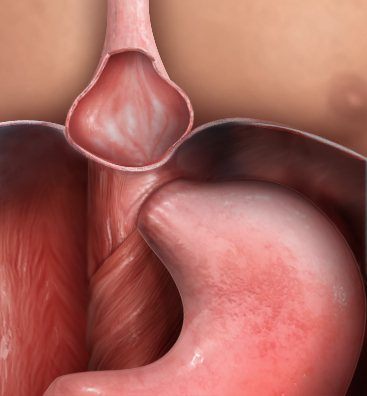
This type of hiatal hernia is less common but can be more serious. In a paraesophageal hernia, part of the stomach pushes through the diaphragm and lies next to the esophagus. This type can potentially lead to complications, including the strangulation of the stomach, which can cut off its blood supply and lead to a medical emergency.
Symptoms of a stomach hernia can vary greatly. Some people experience mild discomfort, while others may suffer from chronic acid reflux, chest pain, difficulty swallowing, and regurgitation of food. If left untreated, a hiatal hernia may lead to more severe complications, such as ulcers or esophagitis.
2. Age and Age-Related Changes
Age is one of the most significant risk factors for developing a stomach hernia. The risk increases as people age, with most cases being diagnosed in individuals over the age of 50.
Weakened Diaphragm with Age
As people get older, their diaphragmatic muscles naturally weaken. The diaphragm’s ability to keep the stomach in place becomes less effective, leading to an increased likelihood that the stomach will slip through the hiatus. The diaphragm may no longer provide sufficient support to prevent part of the stomach from sliding into the chest cavity.
Prevalence of Hiatal Hernias in Older Adults
Research suggests that more than 60% of individuals over 60 years old may have a hiatal hernia, although many of them may not experience any symptoms. The condition is often underdiagnosed, as it may not cause noticeable discomfort until it becomes more severe. As a result, many people do not seek medical attention for what may appear to be simple symptoms like heartburn or regurgitation.
Age-Related Conditions Increasing Risk
In addition to the natural weakening of the diaphragm, other age-related conditions such as chronic constipation, obesity, and chronic coughing can also increase the risk of developing a hiatal hernia. These conditions increase the pressure in the abdomen, putting additional strain on the diaphragm and making it easier for the stomach to herniate.
3. Obesity and Excess Weight
Obesity is one of the most significant risk factors for the development of a stomach hernia. People who are overweight or obese are more likely to have excess abdominal fat, which puts additional pressure on the stomach and the diaphragm.
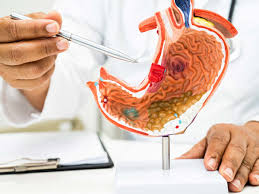
Increased Abdominal Pressure
Excess weight, particularly around the abdominal region, places increased pressure on the stomach. This extra pressure can cause the stomach to push up into the chest cavity through the diaphragm’s opening, leading to a hiatal hernia. The more weight someone carries in their abdominal area, the greater the likelihood of developing a stomach hernia.
Link Between Obesity and Gastroesophageal Reflux Disease (GERD)
Obesity is also closely linked to gastroesophageal reflux disease (GERD), a condition in which stomach acid frequently flows back into the esophagus. This is a common issue in people with hiatal hernias, particularly the sliding type. The weakened diaphragm and the increased pressure from obesity can cause the lower esophageal sphincter (LES) to relax, allowing acid to travel into the esophagus. This leads to heartburn, regurgitation, and potentially esophageal damage.
Impact of Lifestyle Changes
Lifestyle changes aimed at reducing obesity, such as maintaining a healthy diet and engaging in regular exercise, can help reduce the risk of developing a stomach hernia. For individuals who are already diagnosed with a hiatal hernia, weight loss can be beneficial in managing the symptoms and preventing further complications.
4. Gender: Who Is More Prone to Hiatal Hernias?
While hiatal hernias can affect both men and women, certain types are more common in one gender over the other. Studies suggest that women are more likely to develop a hiatal hernia, especially those who are older or have had multiple pregnancies.
Pregnancy and Hiatal Hernia Risk
During pregnancy, the growing uterus can exert additional pressure on the abdomen, which may cause part of the stomach to push upward into the chest. This pressure is particularly noticeable in women who are in their second or third trimester. Hormonal changes during pregnancy can also relax the muscles of the diaphragm, making it easier for the stomach to slip through the hiatus.
Post-Menopausal Women and Diaphragm Weakness
After menopause, women may experience a decline in muscle mass and changes in hormonal levels that lead to the weakening of the diaphragm. This can increase the likelihood of developing a hiatal hernia. The condition is more common in older women than in men of the same age group.
Women at Higher Risk of Paraesophageal Hernias
Women, especially older women, are also at a slightly higher risk of developing a paraesophageal hiatal hernia, which is considered a more severe type of hernia. This may be due to a combination of weakened diaphragm muscles and other anatomical changes that occur with age and hormonal fluctuations.
5. Smoking and Lifestyle Choices
Smoking is another significant risk factor for developing a stomach hernia. It has been found that people who smoke are more likely to experience weakening of the muscles, including those of the diaphragm. Smoking also contributes to conditions like chronic coughing, which can increase intra-abdominal pressure and further promote the development of a hiatal hernia.
How Smoking Contributes to Hiatal Hernia Formation
- Weakened Esophageal Sphincter: Smoking can weaken the lower esophageal sphincter (LES), a muscle that helps prevent stomach acid from refluxing into the esophagus. A weakened LES can contribute to GERD, which is often associated with hiatal hernias.
- Chronic Coughing: Smoking irritates the lungs and airways, leading to chronic coughing. Frequent coughing increases intra-abdominal pressure, which can push the stomach upward and promote the formation of a hiatal hernia.
- Slower Healing: Smoking impairs blood circulation, which can slow the healing process and complicate the treatment of any associated complications like ulcers or acid reflux.
6. Genetic Predisposition and Family History
Genetics may also play a role in determining whether someone is more prone to developing a hiatal hernia. Individuals with a family history of the condition may be at an increased risk, suggesting a genetic predisposition. However, the specific genes involved are not yet well understood, and further research is needed to fully elucidate the role of genetics in this condition.
Structural Abnormalities: People with certain genetic conditions may have structural abnormalities in the diaphragm or esophagus, making them more prone to developing a hiatal hernia.
Increased Risk for Relatives: If one or both parents have a hiatal hernia, their children may have an increased risk of developing the condition.
7. Other Risk Factors
In addition to the above-mentioned factors, there are other risk factors that may make certain individuals more prone to developing a hiatal hernia.
Chronic Conditions
Certain chronic conditions can contribute to the formation of a hiatal hernia. These include:
- Chronic Coughing: Conditions like chronic bronchitis, asthma, or allergies that lead to persistent coughing can increase intra-abdominal pressure, which may increase the risk of a stomach hernia.
- Constipation: Chronic constipation or straining during bowel movements can increase pressure within the abdomen, which may push part of the stomach through the diaphragm.
- Elevated Intra-Abdominal Pressure: Conditions that lead to increased pressure in the abdomen, such as heavy lifting or working in physically demanding jobs, can also increase the likelihood of a hiatal hernia.
In summary, while anyone can develop a stomach hernia, certain individuals are more likely to experience this condition due to a combination of factors. Age, obesity, gender, lifestyle choices, and genetic predisposition all play significant roles in determining who is more prone to developing a hiatal hernia. By understanding these risk factors, individuals can take steps to reduce their chances of developing a hiatal hernia or seek early treatment to manage symptoms effectively.
Managing a healthy weight, avoiding smoking, and taking steps to reduce intra-abdominal pressure can significantly lower the risk of developing a stomach hernia. If you suspect you have a hiatal hernia or are experiencing symptoms like heartburn, chest pain, or difficulty swallowing, it is important to seek medical advice for a proper diagnosis and treatment plan.

